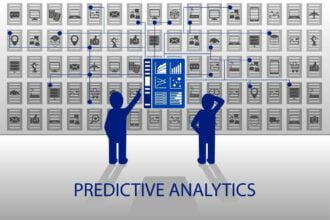I recently “met” Kristen J. Eckstein on LinkedIn. She’s the Executive Producer at Imagine! Studios and the author of a number of books. I had started a discussion about boutique publishing firms vs. true self-publishing vs. “traditional” publishing and she chimed in. After a few emails, it was telephone time and we hit if off immediately. We shared some of the same experiences and grievances, making for a good rant. I liked her comment that “traditional publishing the new vanity”
Kristen’s a really smart cookie and I’m pleased to present her guest post.
I cannot tell you how many conversations I’ve had recently with dissatisfied self-published authors who went through a self-publishing company to get their book done. Call it vanity, “paid-for” publishing, “POD” publishing, subsidy, etc., the business model remains the same. The company takes several thousand dollars from you and gives you a book. Then they proceed to give you “royalties” on every book you sell. You get your book done, the publisher handles all the nitty gritty stuff, you get an ISBN and distribution, then you make more money immediately as books are sold. Sounds like a great deal, right?
Think again.
…
I recently “met” Kristen J. Eckstein on LinkedIn. She’s the Executive Producer at Imagine! Studios and the author of a number of books. I had started a discussion about boutique publishing firms vs. true self-publishing vs. “traditional” publishing and she chimed in. After a few emails, it was telephone time and we hit if off immediately. We shared some of the same experiences and grievances, making for a good rant. I liked her comment that “traditional publishing the new vanity”
Kristen’s a really smart cookie and I’m pleased to present her guest post.
I cannot tell you how many conversations I’ve had recently with dissatisfied self-published authors who went through a self-publishing company to get their book done. Call it vanity, “paid-for” publishing, “POD” publishing, subsidy, etc., the business model remains the same. The company takes several thousand dollars from you and gives you a book. Then they proceed to give you “royalties” on every book you sell. You get your book done, the publisher handles all the nitty gritty stuff, you get an ISBN and distribution, then you make more money immediately as books are sold. Sounds like a great deal, right?
Think again.
Publishing Math 101
First of all, you already paid to get your book done. And if you went the professional route and did it right, you probably paid anywhere from $3,000–10,000 in the process. Then you’re going to pay anywhere from $2–$5 and up on every book sold? Let’s do the math. Don’t worry, I’ll make it easy on you.
- Let’s say your book is 120 pages, 5.5″ by 8.5″ in size. Typical print cost on such a book is $2.52.
- Your book retails for $10
- The vanity publisher generously lets you buy copies at 50% off to resell (an excellent discount, by the way).
- This means you pay $5 per copy.
- The publisher makes a profit of $2.48 per copy
Now let’s do the math on distribution through Amazon:
- Amazon takes 45% off the retail price, so they pay $5.50 per book.
- Your book sells on Amazon and your publisher receives that $5.50 in compensation.
- Then the publisher “generously” gives you a 35% royalty on the net profit, so you make $1.93 per book.
- The print cost is $2.52, so the publisher keeps the remainder: $1.05 per book.
That sounds fine, after all, they’re stocking your books and filling your orders, right?
Think again.
This is the typical outline of a paid-for publisher that uses the print-on-demand system for printing and Ingram’s distribution channel. Let me give you an industry secret here. The publisher does absolutely nothing to fill orders for your books. If you order directly from your publisher, it’s as easy as them going into the printer’s back-office, filling out a form, selecting your address, and the printer does all the work. The printer prints, binds, and ships the books to your door. If someone orders your book off Amazon, your publisher doesn’t lift a finger. The printer and distributor do all the work for them, and all your publisher does is sit back and collect the quarterly checks.
So on an order of 100 books shipped directly to you, your publisher just made $248 for something that took them less than 5 minutes, and that’s if the person handling your account is a newly-hired intern. If you sell 100 books on Amazon, your publisher just made $105 for doing absolutely nothing. Wouldn’t it be great if you got to keep that extra $105? After all, you’re the one doing all the marketing and promotion.
Now let’s think about the traditional industry for a second. No, you don’t have to pay anything up front to get your book created. And if you’re lucky you’ll even get an advance of at least $3,000.
But… (you knew that was coming, didn’t you?)
- The publisher takes 100% of the control away from you.
- The publisher requires you to create and implement your own marketing plan.
- The publisher requires you to pay for all your marketing efforts out of your advance, then out of your own pocket.
- And, the publisher “highly recommends” a specific PR firm for you to hire (a good PR firm will cost you a minimum of $1,000 per month).
Phil’s note: And then some.
Return on Investment
The author receives six percent of every book sold and the prestige of having a big publisher name on your book. In other words, on that $10 book mentioned above, you’ll make 60 cents. And that’s only after your advance is earned out. If you got that $3,000 advance, you’d have to sell 5,000 copies of your book to ever see another dime from the publisher.
Meanwhile, the publisher is keeping all of the profits. Let’s say after the distribution discount and print cost the remainder is $2.98. So before you see another dime, the publisher will make at least $14,900 on your book and you foot all of the marketing costs.
If you sold those 5,000 books through a vanity publisher, only through Amazon, you would have made $9,650 immediately. Imagine if you went indie! You would make that entire $14,900.
Now, it is true that the average self-published book only sells 250 copies. But it is also true that the average self-published book is unedited and poorly designed with no marketing plan. So if you treat your self-published book like it’s traditionally published, set it up the correct way for full distribution and keep your marketing doors open to bookstores, imagine how many copies you could sell!
I’ll leave you with two questions.
- When’s the last time you bought a book you really wanted solely based on who published it?
- Is going with a traditional publisher strictly for the ego boost and name recognition the “new” vanity?
I think that things are headed in that direction.
Feedback
What do you think of Kristen’s perspective? Is traditional publishing the new vanity publishing?
Kristen Eckstein has been coaching people through writing and publishing their books “indie” style for almost 8 years. She has appeared on numerous guest blogs and interviews as well as conducted local and virtual writing and publishing workshops. Get your free copy of her eBooklet, “7 Keys to a Best Seller” at www.UltimateBookCoach.com.
Is Traditional Publishing Really Vanity? Is Self-Publishing Still a “Bad” Word?
by Kristen Eckstein, Book Coach
I cannot tell you how many conversations I’ve had recently with dissatisfied self-published authors who went through a self-publishing company to get their book done. Call it vanity, “paid-for” publishing, “POD” publishing, subsidy, etc., the business model remains the same. The company takes several thousand dollars from you and gives you a book. Then they proceed to give you “royalties” on every book you sell. You get your book done, the publisher handles all the nitty gritty stuff, you get an ISBN and distribution, then you make more money immediately as books are sold. Sounds like a great deal, right?
Think again.
First of all, you already paid to get your book done. And if you went the professional route and did it right, you probably paid anywhere from $3,000–10,000 in the process. Then you’re going to pay anywhere from $2–5 and up on every book sold? Let’s do the math. Don’t worry, I’ll make it easy on you.
Let’s say your book is 120 pages, 5.5″ by 8.5″ in size. Typical print cost on such a book is $2.52.
Your book retails for $10
The vanity publisher generously lets you buy copies at 50% off to resell (an excellent discount, by the way).
This means you pay $5 per copy.
The publisher makes a profit of $2.48 per copy
Now let’s do the math on distribution through Amazon…
Amazon takes 45% off the retail price, so they pay $5.50 per book.
Your book sells on Amazon and your publisher receives that $5.50 in compensation.
Then the publisher “generously” gives you a 35% royalty on the net profit, so you make $1.93 per book.
The print cost is $2.52, so the publisher keeps the remainder: $1.05 per book.
That sounds fine, after all, they’re stocking your books and filling your orders, right?
Think again.
This is the typical outline of a paid-for publisher that uses the print-on-demand system for printing and Ingram’s distribution channel. Let me give you an industry secret here… The publisher does absolutely nothing to fill orders for your books. If you order directly from your publisher, it’s as easy as them going into the printer’s back-office, filling out a form, selecting your address, and the printer does all the work. The printer prints, binds, and ships the books to your door. If someone orders your book off Amazon, your publisher doesn’t lift a finger. The printer and distributor do all the work for them, and all your publisher does is sit back and collect the quarterly checks.
So on an order of 100 books shipped directly to you, your publisher just made $248 for something that took them less than 5 minutes, and that’s if the person handling your account is a newly-hired intern. If you sell 100 books on Amazon, your publisher just made $105 for doing absolutely nothing. Wouldn’t it be great if you got to keep that extra $105? After all, you’re the one doing all the marketing and promotion.
Now let’s think about the traditional industry for a second. No, you don’t have to pay anything up front to get your book created. And if you’re lucky you’ll even get an advance of at least $3,000.
BUT… (you knew that was coming, didn’t you?)
The publisher takes 100% of the control away from you.
The publisher requires you to create and implement your own marketing plan.
The publisher requires you to pay for all your marketing efforts out of your advance, then out of your own pocket.
And, the publisher “highly recommends” a specific PR firm for you to hire (a good PR firm will cost you a minimum of $1,000 per month).
What do you get in return?
6% of every book sold and the prestige of having a big publisher name on your book. In other words, on that $10 book mentioned above, you’ll make 60 cents. And that’s only after your advance is earned out. If you got that $3,000 advance, you’d have to sell 5,000 copies of your book to ever see another dime from the publisher.








